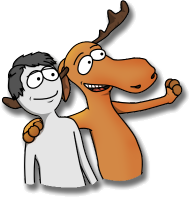Neuro Linguistic Programming – The Basics: Submodalities.
We have already had a look at the main Representational Systems or Modalities of Neuro-Linguistc Programming (NLP).
Moreover, to briefly recap then; the basics behind the essential methods and techniques used in Neuro-Linguistic Programming NLP are the Representational Systems; or modalities. Moreover, these are basically comprised of the five main senses; visual, auditory, kinesthetic, olfactory (smell); and gustatory (taste). An extra mode known as digital is also used.
These modalities rest on the idea that the perception of the world is formed through the senses; and that feelings, memories and behaviours are closely intertwined with these sensory experiences.
Submodalities of Neuro-Linguistic Programming
Now let’s get onto the nitty gritty of Neuro-Linguistic Programming NLP and how change actually comes about.
Each Representational System examined so far has within it fine distinctions or subsets.
As a matter of fact, these building blocks or Submodalities of Neuro-Linguistic Programming are what give meaning to our experiences; they also code, order and help us remember events and happenings in our lives.
For example, two differing beliefs; say a positive belief and a negative one would be coded in the brain by the use of different submodalities.
Nevertheless, if the meaning of an experience can be changed then our state changes; which in turn facilitates a change in responses or behaviours.
Finally when we behave differently or do things differently we change; both our own reality and our personal world.
Furthermore, submodalities are key concepts to a lot of Neuro-Linguistic Programming techniques and practices.
We are going to examine here the three main submodalities used in Neuro-Linguistic Programming (NLP); visual, auditory and kinesthetic.
To demonstrate, let’s take a look at the main Representational Systems or Modalites with their corresponding sub-modalities.
Visual Submodality
When we are in Visual Modality; and information is being both stored and processed through images; within this category are many finer distinctions or submodalities such as:
- Is the image big or small?
- Is the image bright or dim?
- Do you see the picture in black and white or colour?
- What distance is the image from you; and where does it appear in your vision ~ left, right, top or bottom?
- Do you see the image clearly and in focus or blurry?
- Is it a moving image like a film or a snapshot?
- Is it flat or in 3D?
- Can you see through the image or is it dense?
- Is it framed; does it have a border or is your image panoramic?
- When you think of a situation in visual mode do you see yourself in the picture (dissociated) or as if you were seeing through your own eyes (associated)
More Visual Neuro-Linguistic Programming
Furthermore, there may be more submodalities in the visual category, people are very creative; and as NLP is very individually orientated, there could be all sorts of personal additions to the visual thinking mode.
However, most people will develop a pattern or habit in their visual thinking that distinguishes good memories associated with positive feelings from bad memories associated with negative feelings.
For example, images that hold negative associations may have a dark frame or be darker in colour and images with positive associations may be brighter or have no border or be closer ; it’s a personal thing… It’s different for everybody.
Moreover, these distinctions in submodalites are known as critical submodalities. They are key to making changes to our thinking.
Auditory Submodalities
Moreover, now let’s hear a little about the finer distinctions, or submodalities, within the auditory modality. Feelings associated with an auditory memory will depend on observations such as:-
- Is the sound loud or quiet?
- Do you hear the sound in stereo or mono?
- Is the sound near to you or far away?
- Is the sound external or internal? That is do you hear it within your head or outside of yourself?
- Where does the sound come from ~ above, below, left or right?
- Is it high or low pitch?
- Is the sound clear or fuzzy?
- If the sound is conversation; do you hear the words or the tone?
- Is the sound continuous; or are there pauses?
- What is the tempo and rhythm like? Is it fast or slow?
Kinesthetic Submodalities
Finally let’s gets to grips with the finer distinctions, or submodalities; within the Kinesthetic modality. Feelings associated with kinesthetic thought processing will depend on observations such as:-
- Is the sensation strong or soft?
- Is the sensation heavy or light?
- Does the sensation cover a large or small area?
- Is there an associated temperature; a feeling of hot or cold?
- Where in the body exactly is the sensation felt?
- Is there any pressure associated with the feeling?
- Does the sensation move around or stay in the same place?
- Is the sensation constant or intermittent?
- Is there an association of smoothness or roughness?
- Are there any vibrations with the sensation?
Now for the really fun part. We are going to have a look at; (guess which Modality I’m in ?); some fun NLP techniques that you can start practicing at home. I especially like the Swish Pattern. This is because it can be used to dispel all sorts of unpleasant feelings.


